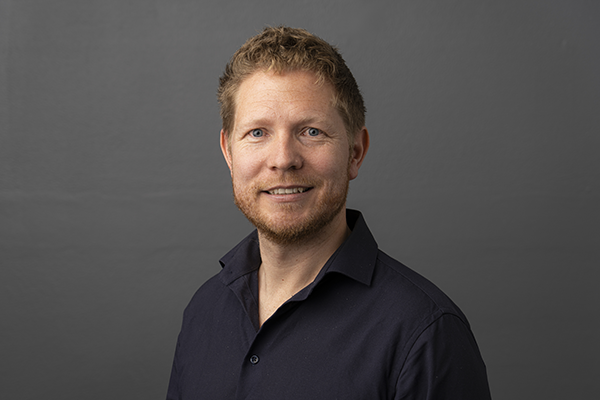Dennis Valbjørn Christensen
Research leader

Project title
A solid look at the green transition
What is your project about?
Batteries are a vital part of the green transition. The race for the ideal battery is driven by a need for increased energy density combined with reliable operation, attractive prices and short charging times. However, many battery materials exhibit unreliable operation after repeated charging. A detailed understanding of how ions and electrons move on the nanoscale and either create short-circuiting or functional batteries is lacking. In this project, I will develop a new method that makes use of quantum mechanical magnetic field sensors to detect how electrons and ions move on the nanoscale in batteries. I will use this knowledge to investigate why batteries degrade as well as design strategies to avoid this.
How did you become interested in your particular field of research?
I have conducted research on new energy materials for several years, in which the functional properties are created by electrons and ions moving and chemically reacting with each other. To understand these functional processes in depth, it is important to be able to follow electrons and ions on the nanoscale in real time – but how can this be done, when their movement is often buried inside condensed matter?
I have worked on mapping the magnetic fields from materials using quantum magnetometers during two external stays in Switzerland and Israel, which makes it possible to visualize electronic currents in solids at low temperatures. I have brought that knowledge home to Denmark with the goal of using quantum mechanical magnetic field sensors to visualize how electrons and ions move at room temperature in solid state batteries.
What are the scientific challenges and perspectives in your project?
The key research challenge in my project is to understand the internal processes in solid-state batteries. It is a very active field of research with great commercial interest, where the internal processes are illuminated with several analytical tools. Despite the great activity, achieving a detailed understanding of why solid-state batteries degrade remains a major challenge. In this project, I introduce a completely new method to visualize how electrons and ions move on the nanoscale inside solid-state batteries as the batteries charge and discharge. My goal is to achieve detailed insight into the functional processes at the nanoscale to a degree that cannot be achieved today with current analytical tools. In doing so, I want to help solve a core challenge in the next generation of batteries.
What is your estimate of the impact, which your project may have to society in the long term?
Batteries play a crucial role in the green transition by virtue of their role in electrifying vehicles and balancing our energy consumption with green energy production. Solid-state batteries are often considered the holy grail of battery research, as they have the potential to combine high energy density and fast charging with long life and safe use. The most promising battery architectures use metallic lithium as the negative electrode, which often leads to a dramatic degradation of the batteries. However, there is no consensus as to why the batteries degrade. The goal of my project is to develop a new method to understand the internal degradation mechanisms, and use this knowledge to develop solid state batteries with improved performance.
Which impact do you expect the Sapere Aude programme will have on your career as a researcher?
The Sapere Aude: DFF Starting Grant enables me to use quantum mechanical sensors to investigate the inner processes of the next generation of batteries. It is a unique opportunity to expand my research group and work towards a long-term goal of combining quantum sensors with various green energy technologies. In addition, being part of the prestigious Sapere Aude program is a welcome pat on the back.
Background and personal life
I am 36 years old and live on Amager with my girlfriend and 2-year-old son. In addition to enjoying the little family, I also spend my time on various social activities and kayaking in the canals of Copenhagen.
View all research leaders here
Research institution
Technical University of Denmark
Research field
Material Science
City of your current residence
Copenhagen
High school
Nakskov Gymnasium
